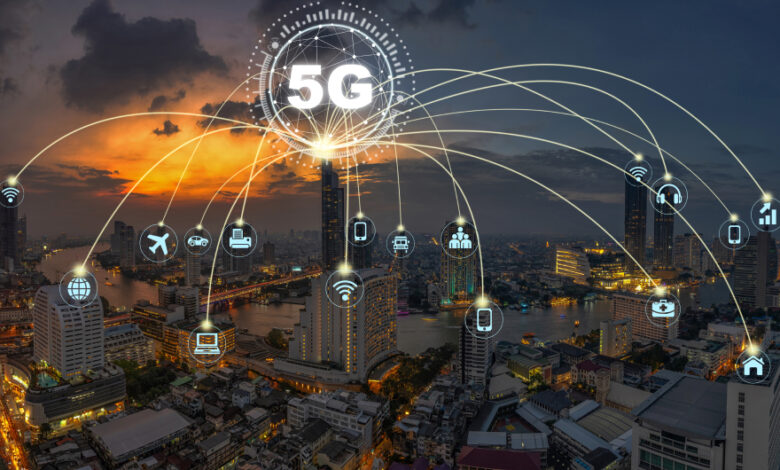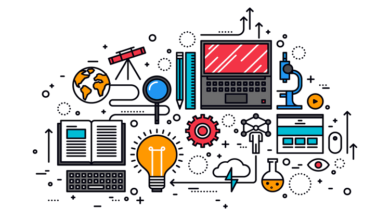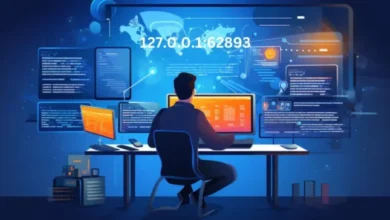How 5G Technology Revolutionizes the Internet of Things (IoT)

How 5G Technology Revolutionizes the Internet of Things (IoT) an era characterized by constant connectivity and the proliferation of smart devices, the integration of 5G technology stands poised to redefine the landscape of the Internet of Things (IoT). The marriage of 5G and IoT represents a significant leap forward in technological capabilities, promising unparalleled speed, reliability, and scalability. Let’s delve into how the advent of 5G is reshaping and enhancing the IoT ecosystem.
Faster Speeds and Lower Latency
One of the most compelling aspects of 5G technology lies in its remarkable speed and significantly reduced latency. Unlike its predecessors, 5G boasts speeds that are exponentially faster, facilitating seamless communication between interconnected devices in real time. This blazing-fast connectivity addresses one of the primary limitations of earlier networks, enabling IoT devices to transmit and receive data at unprecedented speeds.
Expanded Capacity and Connectivity
The introduction of 5G heralds an era of expanded capacity and connectivity. With its ability to support a massive number of devices within a confined area, 5G infrastructure lays the groundwork for a more extensive IoT network. This expanded capacity ensures that a multitude of devices—ranging from smart sensors and wearables to autonomous vehicles—can operate concurrently without compromising performance.
Enhanced Reliability and Efficiency
5G technology brings forth enhanced reliability and efficiency, crucial elements for the seamless functioning of IoT devices. Its low latency minimizes delays and ensures near-instantaneous communication, thereby optimizing the performance of interconnected systems. This reliability is a game-changer for critical applications, such as healthcare and industrial automation, where split-second responses are imperative.
Empowering Innovative Applications
The fusion of 5G and IoT opens the floodgates for a wave of innovative applications across various industries. In healthcare, for instance, remote surgeries and real-time patient monitoring become more feasible and reliable with the high-speed, low-latency capabilities of 5G. Similarly, in smart cities, 5G-enabled IoT devices can efficiently manage traffic, reduce energy consumption, and enhance public safety.
Revolutionizing Industries
5G’s transformative potential extends its reach into diverse sectors. Industries like manufacturing stand to benefit immensely from the integration of 5G and IoT, enabling the creation of smart factories equipped with connected machinery and sensors that optimize production processes and predictive maintenance.
Healthcare: Remote Care Redefined
5G’s low latency and high bandwidth redefine healthcare practices. Remote patient monitoring devices can transmit real-time data with precision, enabling healthcare professionals to offer timely interventions. Wearable health tech, coupled with 5G, revolutionizes personalized care, ensuring continuous monitoring and prompt responses to any health anomalies.
Transportation: Paving the Way for Autonomous Vehicles
The fusion of 5G and IoT drives the future of transportation. Autonomous vehicles heavily rely on instantaneous data exchange, and 5G’s near-zero latency ensures swift decision-making for these vehicles. Smart traffic management systems equipped with 5G-powered sensors optimize traffic flow and enhance road safety, laying the groundwork for the mainstream adoption of self-driving cars.
Retail: Immersive Shopping Experiences
5G’s speed and connectivity transform the retail sector. IoT devices, such as augmented reality (AR) mirrors and smart shelves, provide immersive shopping experiences. Customers can explore products virtually and receive personalized recommendations, revolutionizing the traditional brick-and-mortar shopping journey.
Agriculture: Precision Farming and Crop Management
The agricultural sector harnesses the power of 5G-driven IoT for precision farming. Smart sensors in fields gather data on soil quality, humidity, and crop health in real time. This data empowers farmers to make informed decisions, optimizing water usage, minimizing waste, and maximizing crop yield.
Challenges and Considerations
While the promises of 5G technology are immense, its integration with IoT is not without challenges. Security concerns, such as potential vulnerabilities in a more extensive and interconnected network, need stringent addressing. Additionally, the cost of deploying 5G infrastructure remains a significant consideration for widespread adoption.
Conclusion: A Future of Infinite Possibilities
The collaboration between 5G technology and the Internet of Things opens doors to a future brimming with innovation and efficiency. The seamless integration of these technologies across various sectors reshapes industries and enhances everyday life experiences. As the infrastructure continues to expand and evolve, the potential for transformative applications across diverse domains becomes increasingly apparent.



